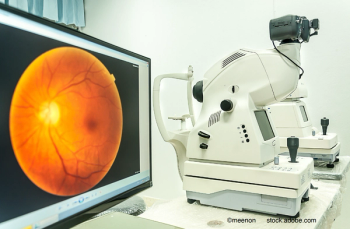
Inexpensive laser pointers a threat to eyesight
Some laser pointers available for less than €20 exceed the legal limits on their power by as much as 127 fold, according to Australian researchers. They have called on regulators to consider a ban on green laser pointers.
Some laser pointers available for less than €20 exceed the legal limits on their power by as much as 127 fold, according to Australian researchers. They have called on regulators to consider a ban on green laser pointers.
Researchers at RMIT University in Melbourne, Australia, found that green lasers were particularly dangerous, with all four models tested exceeding the European and Australian safety limit of 1 mW for lasers emitting a visible beam.
“All the green laser pointers we tested were from 51 to 127 times over the 1 mW government safety limit,” said Kate Fox, a senior lecturer in RMIT's School of Engineering. “At that upper level, the beam would cause catastrophic retinal damage.”
The study comes on the heels of a call by airline pilots in the UK to classify the pointers as offensive weapons.
Related:
On February 15, a Virgin Atlantic flight bound for New York returned to London’s Heathrow Airport after the pilot reported being harmed by a laser shone from the ground.
“We repeat our call to the Government to classify lasers as offensive weapons which would give the police more power to arrest people for possessing them if they had no good reason to have them,” said Jim McAusian, general secretary of the British Airline Pilots Association. “This incident shows why this is becoming more-and-more urgent.”
Anyone, including children, can buy such laser pointers over the counter or online, said Fox.
Working with RMIT ophthalmologist Marc Sarossy and Alfred Hospital physician Matthew Hao Lee, Fox tested four models of green laser pointer and four models of red.
Sarossy said three of the four red models were within safety limits. "There can still be some risk, but our normal response to visible light is to blink and turn away-and that's usually enough to avoid any permanent damage.”
Recent:
Green lasers produce more infrared radiation, which does not trigger a blink and aversion response, and they also produce a more focused spot, he said.
Imported laser pointers were poorly made, with manufacturers sometimes leaving out infrared-blocking filters to hold down costs, the researchers said.
The Australian team presented its research at the IEEE Engineers in Medicine and Biology Society conference in Orlando, FL, on August 18.
Another problem with some laser pointers is that they are not labelled in such a way that consumers can gauge their power, according to Daniel Hewett, a health promotion officer at the US Food and Drug Administration (FDA) and an interview by a reporter for the American Academy of Ophthalmology.
About 60% of the laser pointers sampled by the FDA were more powerful than their labels stated.
Green lasers are not the only dangerous variety, according to a recent study by Sulaiman M Asulaiman and colleagues at the King Khaled Eye Specialist Hospital in Riyadh, Saudi Arabia.
Writing in
Related:
The patients were young men who were mostly injured accidentally at play. They presented with maculopathies including a full-thickness macular hole in four of the eyes, a premacular subhyaloid haemorrhage in five eyes, premacular sub-internal limiting membrane haemorrhage in two eyes, and outer retinal disruption at the fovea in one eye, an epimacular membrane in one eye, and a schissis-like cavity in one eye.
Best-corrected visual acuity at presentation was a mean of 20/290. Clinicians performed neodymium:yttrium-aluminum-garnet hyaloidotomy in the five eyes with subhyaloid haemorrhage. Pars plana vitrectomy successfully closed the four full-thickness macular holes. Four eyes improved spontaneously. The final mean best-corrected visual acuity was 20/35.
"High-power handheld laser devices may lead to an epidemic of ocular injuries that requires attention at different levels," concluded Dr Asulaiman and colleagues. "The difference between these new high-power laser devices and the low-power pointers cannot be over-emphasised, and government action such as banning the importation of these high-power handheld laser devices, laws for assault or malicious intent, and a general public awareness campaign, may be warranted."
More retina:
Laser strikes on aircraft seem to be on the rise in some locations. In Los Angeles, CA, laser attacks reported on aircraft doubled to 240 in 2015, according to the Orange County Register, citing statistics from the US Federal Aviation Administration.
On the other hand, the UK Civil Aviation Authority reported 1439 laser incidents at the most frequent locations in 2015, about the same as the 1440 in 2014. At Heathrow, the number dropped from 168 to 121 in that time.
Using high-tech tracking cameras, law enforcement officers in southern California have been able to locate and arrest suspects who shine lasers at aircraft as a kind of prank, the newspaper reported.
Newsletter
Keep your retina practice on the forefront—subscribe for expert analysis and emerging trends in retinal disease management.

















































